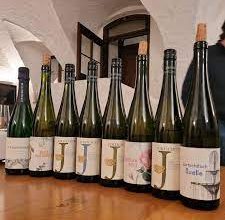What to eat in Hungary popular dishes worth trying

In the fall of 2021, Russians who completed the full course of vaccination were allowed to enter Hungary. Budapest, the charming towns in the Danube bend, the resorts of Lake Balaton and the health resort on Lake Heviz are beauties that you can talk about for hours.
However, Hungary can rightfully be proud of its cuisine and gastronomic traditions. Food.ru found out what you should definitely try in Hungary and what delicious souvenirs to bring home.
Goulash
Perhaps this is the most famous dish of Hungarian cuisine: housewives from Russia willingly adapted it. The main ingredient of goulash is not meat, as you might think, but paprika. Thanks to the right combination of sweet and hot spices, the perfect taste is achieved.
The consistency is something between a liquid stew and a very thick soup, but each cook determines the optimal thickness of goulash himself. The best side dish would be homemade gnocchi, but you can serve it simply with pasta.
Since 1999, the annual International Goulash Festival has been held in the Hungarian city of Szolnok. The best chefs of the country come to the holiday to delight guests with aromatic dishes, which are prepared in the open air in giant cauldrons.

Paprikash
A close relative of goulash. To prepare it, more tender meat is used: young veal, pork or chicken thighs. Cream or sour cream is also added to the paprika-based sauce to give it a more subtle, mild taste. However, this softness is deceptive: paprika can be quite spicy.
4300 l – the volume of the largest goulash ever prepared in the world. This required the efforts of 19 cooks and 40 assistants for 7 hours. The goulash used 700 kg of beef, 140 kg of onions, 8 kg of garlic, and over 130 kg of paprika.
Fried goose leg
France has gained gastronomic popularity thanks to its wonderful duck leg confit. Hungary can claim to be a full-fledged neighbor: a well-cooked goose is no worse than duck. The leg is fried until crispy and served with a side dish of pickled cabbage, cucumbers and potatoes.
Libamai and foie gras
And again there is unspoken competition with France, where the cult of foie gras and duck liver pate reigns. True, incredibly expensive. The delicacy made in Hungary is no less tasty, but much cheaper. For the first time, you should try goose pate in a restaurant, with wine (sweet Tokaji is perfect) and a baguette.
and then buy a few jars to bring with you. Well, those who have already tried the pate should try libamai: it is fried goose liver, which is served as a hot dish. Like French foie gras, Hungarian libamai can be served with sweet berry sauces, fruits and even jam – the contrast of flavors will appeal to gourmets.
Lecho
A person with a Soviet past would not be surprised by the word “lecho”: we know that this is the name of a certain vegetable snack with the addition of pepper, carrots, eggplant, and beans. In Hungarian cuisine, the original recipe for lecho is treated more strictly: it is just pepper in tomato juice, and all other additives, as they say, are from the evil one. In a restaurant they take this dish as an appetizer, but if you want to dream it up at home later, that’s a different story.
Halasle fish soup
If you love fish soup and haven’t denied yourself the pleasure of trying creamy salmon soup in Finland or bouillabaisse in Marseille, be sure to try halasle. This soup was created by local fishermen and combines fish caught in the lakes of Hungary or the Danube and paprika, a favorite seasoning in Hungarian cuisine.
The remaining components are predictable: potatoes, onions, carrots. The secret of success is the freshness of the fish: it is best to try halasle in restaurants on the coast from fishermen; they use catfish, pike or carp from their own catch.
Bograch

A soup somewhat similar to goulash. It contains meat and a lot of vegetables – peppers, carrots, potatoes, onions, tomatoes. The most correct recipe involves the use of smoked ribs or sausages: it is believed that the dish was invented by Hungarian shepherds; they needed food that was easy to prepare on the go from what was on hand.
Turosh chusa
If you have been to Austrian Carinthia and appreciated kasnudli there (something between noodles and dumplings), then you should definitely try the Hungarian national dish: these are noodles served with cottage cheese, sour cream and pork cracklings. This is not very similar to the Italian technology of making pasta, but it turns out delicious in its own way.
Cake “Do bosh”
Even after the most hearty lunch there should be room for dessert. One of the main gastronomic symbols of Budapest is the Dobos cake, which is served in the old Žerbo confectionery at the very beginning of the tourist street Váci. This cake consists of many thin sponge cakes and chocolate cream, and is decorated with a crust of sugar caramel on top; it breaks apart like a crème brûlée.
Café Gerbeau has been operating since 1870. The owner, Emile Gerbeau, was invited to the World Exhibition in Brussels in 1897 and to Paris in 1900, where he was awarded the Legion of Honor. In Hungary, small one-bite cakes are usually called kuglers, and not minions, as in France, because it was the first owner of the pastry shop who brought them to the country and began selling them.





